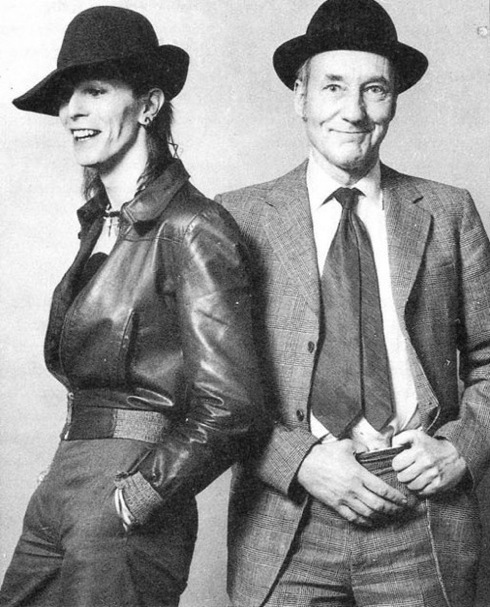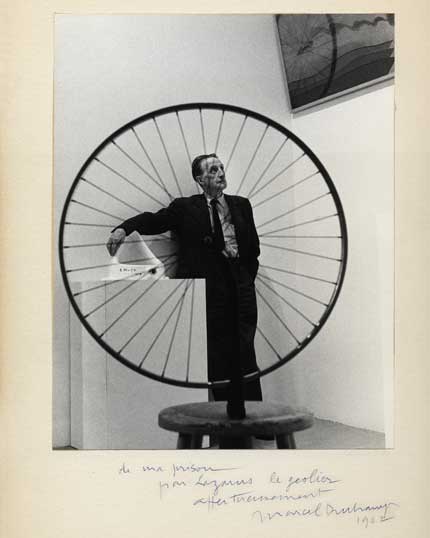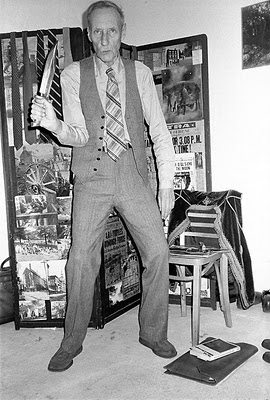The phrases “literary inhibitions” and “grammatical fears” are revealing as a sort of post-modern aesthetic that had their roots particularly in the jargon and anti-language of the Beat poets and writing as a performance art. in their crude way they epitomized the ideal of the underlying premise that the writer must express themselves freely and that talent will atrophy if it gets hung up on the rules of grammar and syntax. The notion derived in part from Andre Breton and the surrealist school, the Antonin Artaud variation and the wedding of modern education theories with the literary precedents of the likes of James Joyce. Except, endowed with neither the erudition or poetic genius of Joyce, the exponents of the free-write school found in his works the demise of sentence structure and a sanctification of the unintelligible. To this morass one could add Alfred Jarry and to some extent Jean Genet and to stretch further into the field about three-quarters of Bertolt Brecht’s output.

—1973: Bowie is interviewed for Rolling Stone with novelist Wiliam Burroughs and photographed by Terry O’Neill—click image for source…
Looking back, one would think at the time that in Finnegan’s Wake Joyce had extended his genre to its ultimate limits. But the new technique of writing that arose in its Wake became analogous to the collage in the field of painting, photography, and the cinema most cleverly by its chief exponent William Burroughs:
“Pages of text are cut and rearranged to form new combinations of word and image-In writing my last two novels, Nova Express and The Ticket That Exploded, I have used an extension of the cut up method I call “the fold in method”-A page of text-my own or some one else’s-is folded down the middle and placed on another page- The composite text is then read across half one text and half the other-The fold in method extends to writing the flash back used in films, enabling the writer to move backwards and forwards on his time track-For example I take page one and fold it into page one hundred-I insert the resulting composite as page ten-When the reader reads page ten he is flashing forwards in time to page one hundred and back in time to page one-The deja vu phenomena can so be produced to order…I have frequently had the experience of writing some pages of straight narrative text which were then folded in with other pages and found that the fold ins were clearer and more comprehensible than the original texts-Perfectly clear narrative prose can be produced using the fold in method-Best results are usually obtained by placing pages dealing with similar subjects in juxtaposition.”
…”The cut-up method brings to writers the collage, which has been used by painters for seventy years. And used by the moving and still camera. In fact all street shots from movie or still cameras are by the unpredictable factors of passersby and juxtaposition cut-ups. And photographers will tell you that often their best shots are accidents . . . writers will tell you the same.Read More:http://www.languageisavirus.com/articles/articles.php?subaction=showcomments&id=1099111044&..#.UUb5nxyG18E
What does one find in this progression from the early experiments of Joyce and Gertrude Stein in the 1920’s to the fold-in collages of the 1960’s counter-culture? It is evident that what began as an attempt to achieve new fluencies in expression and mood by renouncing certain traditional forms and disciplines- here Picasso is pertinent- culminated in the abandonment of all forms, all discipline, and usually all meaning. The black hole of the conceptual of which Marcel Duchamp could be considered of fathering, in part, this illegitimate child.
It can be asked if words do nothing at all if they are emptied of meaning. Language is wholly cerebral, an artificial medium of communication that is crude and unpolished to begin with, and extremely fragile as it is. It is unique to humans and it works only when people agree on what its components mean.

—Marvin Lazarus, Marcel Duchamp, photographie prise au MOMA, NY, le dernier jour de l’exposition “Yhe Art of Assemblage, en 1961.—click image for source…
ADDENDUM:
(see link at end)…Burroughs discovered the cutup in 1959 in Paris through his friend Brion Gysin , a painter. When Gysin began experimenting with cutups in his own work, Burroughs immediately saw the similarity to the juxtaposition technique he had used in Naked Lunch and began extensive experiments with text, often with the collaboration of other writers. (Although Burroughs has credited Gysin with discovering the cutup, he has also acknowledged similar literary experiments in the works of Tzara, Stein, Eliot, and Dos Passos.) In 1960 Burroughs published his initial cutup experiments in Paris in Minutes To Go (with Brion Gysin, Sinclair Beiles, and Gregory Corso) and in San Francisco in The Exterminator (with Brion Gysin), works that were partially intended to introduce the technique to the public. Throughout the 1960s Burroughs and Gysin collaborated on cutup experiments in many media, the most significant collaborations being three films done in 1965 with English film maker Antony Balch (Towers Open Fire, Cut-Ups, and Bill and Tony) and The Third Mind, a book first completed in 1965 but not published in English until 1978. The final version of The Third Mind is both a historical collection of cutup experiments from 1960
978 and a manifesto that sums up the cutup’s significance for Burroughs and Gysin.The cutup is a mechanical method of juxtaposition in which Burroughs literally cuts up passages of prose by himself and other writers and then pastes them back together at random. This literary version of the collage technique is also supplemented by literary use of other media. Burroughs transcribes taped cutups (several tapes spliced into each other), film cutups (montage), and mixed media experiments (results of combining tapes with television, movies, or actual events). Thus Burroughs’s use of cutups develops his juxtaposition technique to its logical conclusion as an experimental prose method, and he also makes use of all contemporary media, expanding his use of popular culture.Read More:http://www.languageisavirus.com/articles/articles.php?subaction=showcomments&id=1099111044&..#.UUb5nxyG18E






 COMMENTS
COMMENTS